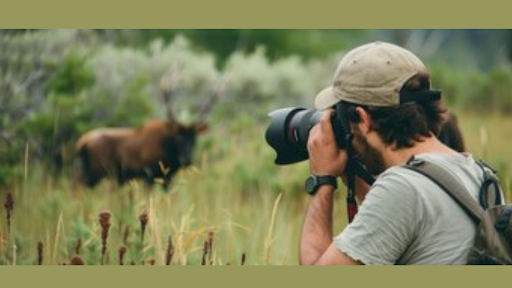Wildlife photography is more than just pointing a camera at an animal. It is about patience, timing, and understanding nature’s unpredictable moments.
But which scenes are the most challenging to freeze in a photograph? Are there certain movements, behaviors, or conditions that make capturing the perfect shot nearly impossible?
From fleeting animal interactions to rare natural events, every wildlife photographer faces hurdles. The key lies in preparation, knowing your subject, and mastering your equipment. With the right strategies, even the toughest moments can be immortalized in stunning images.
Many enthusiasts search for wild photography photos that capture the essence of the wild in action, but the question remains: how can you consistently achieve these difficult shots without disturbing the environment or the creatures themselves? Let’s find out!
Elusive Movements
Animals rarely behave predictably. Fast movements, sudden jumps, or abrupt flight patterns make capturing wildlife a test of reflexes and timing. Birds taking off or predators pouncing are classic examples. To tackle this challenge:
- Use a high shutter speed: This freezes motion, reducing blur.
- Predict behavior: Spend time observing patterns before shooting.
- Continuous shooting mode: Capture multiple frames per second to increase the chance of a perfect shot.
Even with the best camera, a split-second miscalculation can result in a missed opportunity. That’s why patience is critical.
Low-Light or Night Scenes
Many animals are active at dawn, dusk, or night. While these are some of the most magical moments in nature, they are also incredibly difficult to photograph. Low light can produce grainy, underexposed images if not handled correctly. Solutions include:
- Use wide aperture lenses: Allows more light to enter the camera.
- Increase ISO carefully: Balances brightness with acceptable noise levels.
- Invest in a tripod or stabilizer: Reduces motion blur in dim conditions.
Capturing nocturnal creatures in their natural habitat is a rewarding but challenging aspect of wild photography.
Camouflaged Creatures
Nature is full of masters of disguise. Animals blend into their surroundings, making them almost invisible to the human eye. Spotting a camouflaged creature is the first challenge; photographing it is another. Tips to succeed:
- Focus on movement: Even a small twitch can reveal a hidden subject.
- Adjust depth of field: A slightly blurred background can highlight the animal.
- Use long lenses: Keeps distance while still getting a detailed shot.
These moments often require extreme patience and a sharp eye.
Rare Interactions
Capturing interactions between animals—like a hunt, mating ritual, or playful behavior—is one of the most sought-after achievements in wildlife photography. These moments are rare and unpredictable. To improve chances:
- Study seasonal patterns: Certain interactions occur only at specific times of the year.
- Position yourself strategically: Natural hides or blinds allow observation without disturbance.
- Prepare for surprises: Keep your camera ready at all times.
Photographing these fleeting moments can add powerful stories to your wildlife portfolio.
Extreme Weather Conditions
Wildlife doesn’t stop moving when the weather turns harsh. Rain, snow, or storms create dramatic settings but pose serious challenges. Cameras may fog up, light may be insufficient, and terrain can be dangerous. Solutions to consider:
- Weatherproof gear: Protects camera and lens from elements.
- Lens hoods and covers: Prevent raindrops from spoiling shots.
- Plan for light variations: Clouds and storms can change brightness quickly.
Embracing nature’s unpredictability often results in some of the most striking photographs.
Quick Tips for Capturing the Hardest Wildlife Moments
- Blend into surroundings: Avoid startling animals by wearing muted colors.
- Know your gear: Practice settings and techniques before heading out.
- Be patient: Sometimes, waiting hours is necessary for one perfect frame.
- Keep distance: Respect wildlife while ensuring safety for both you and the animals.
Even experienced photographers find these challenges thrilling because each shot requires focus, skill, and timing.
Conclusion
Capturing difficult wildlife moments requires dedication, observation, and technical skill. Whether it’s a predator leaping at its prey, a nocturnal animal emerging under moonlight, or a perfectly camouflaged bird, these experiences create memorable images. Integrating techniques such as high shutter speeds, continuous shooting, and strategic positioning increases the likelihood of success. Photographers who master these approaches can produce breathtaking wild photography photos that reveal the untamed beauty of nature.
The thrill of photographing elusive, fast-moving, or rare behaviors is unmatched. By observing patterns, preparing equipment, and embracing patience, even the most challenging wildlife moments become opportunities for extraordinary storytelling. Every shutter click is a chance to connect viewers with the raw, unfiltered world of animals and their environment. In the end, capturing these moments is not just about skill—it’s about understanding, respecting, and celebrating the wild.

